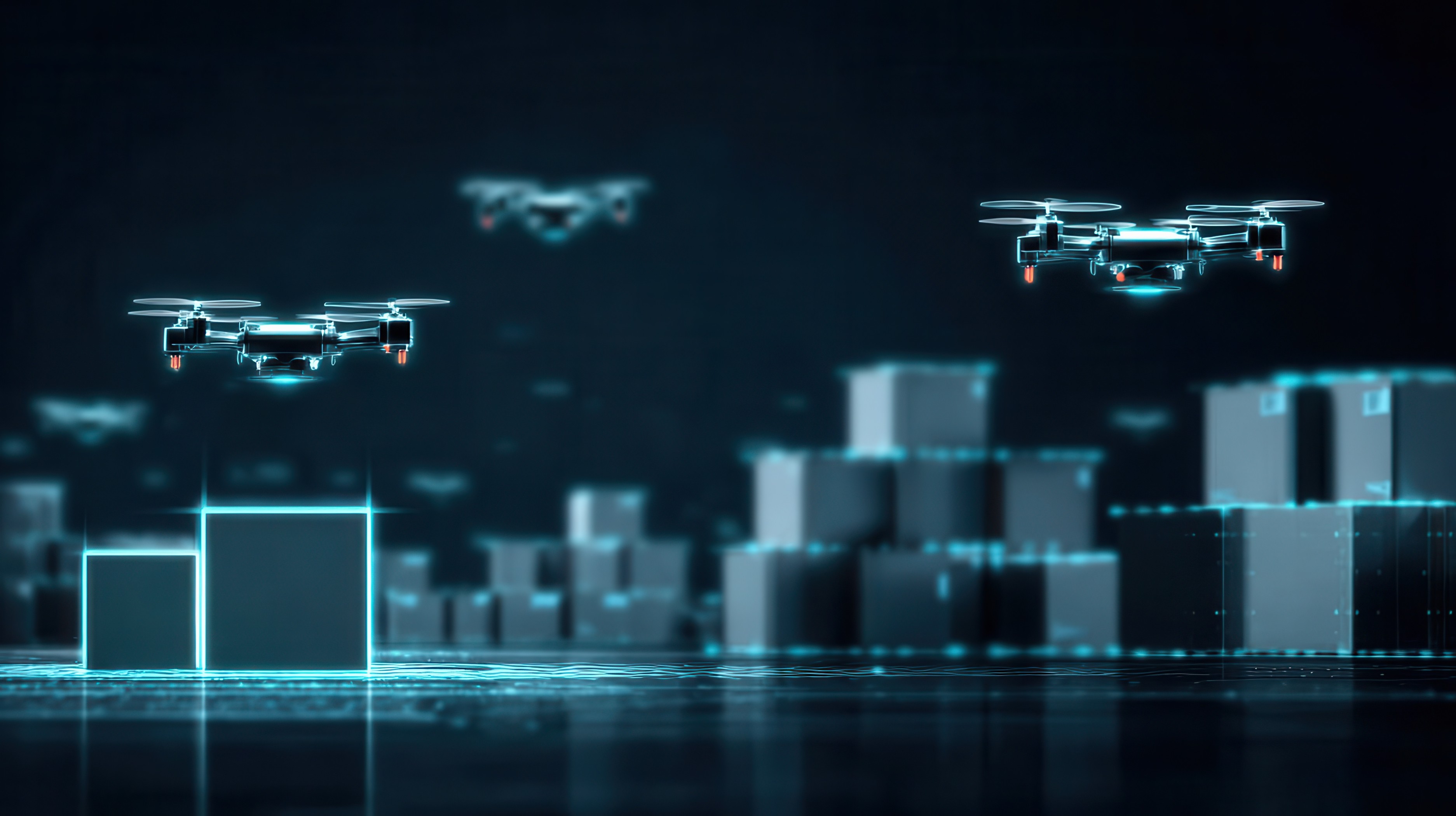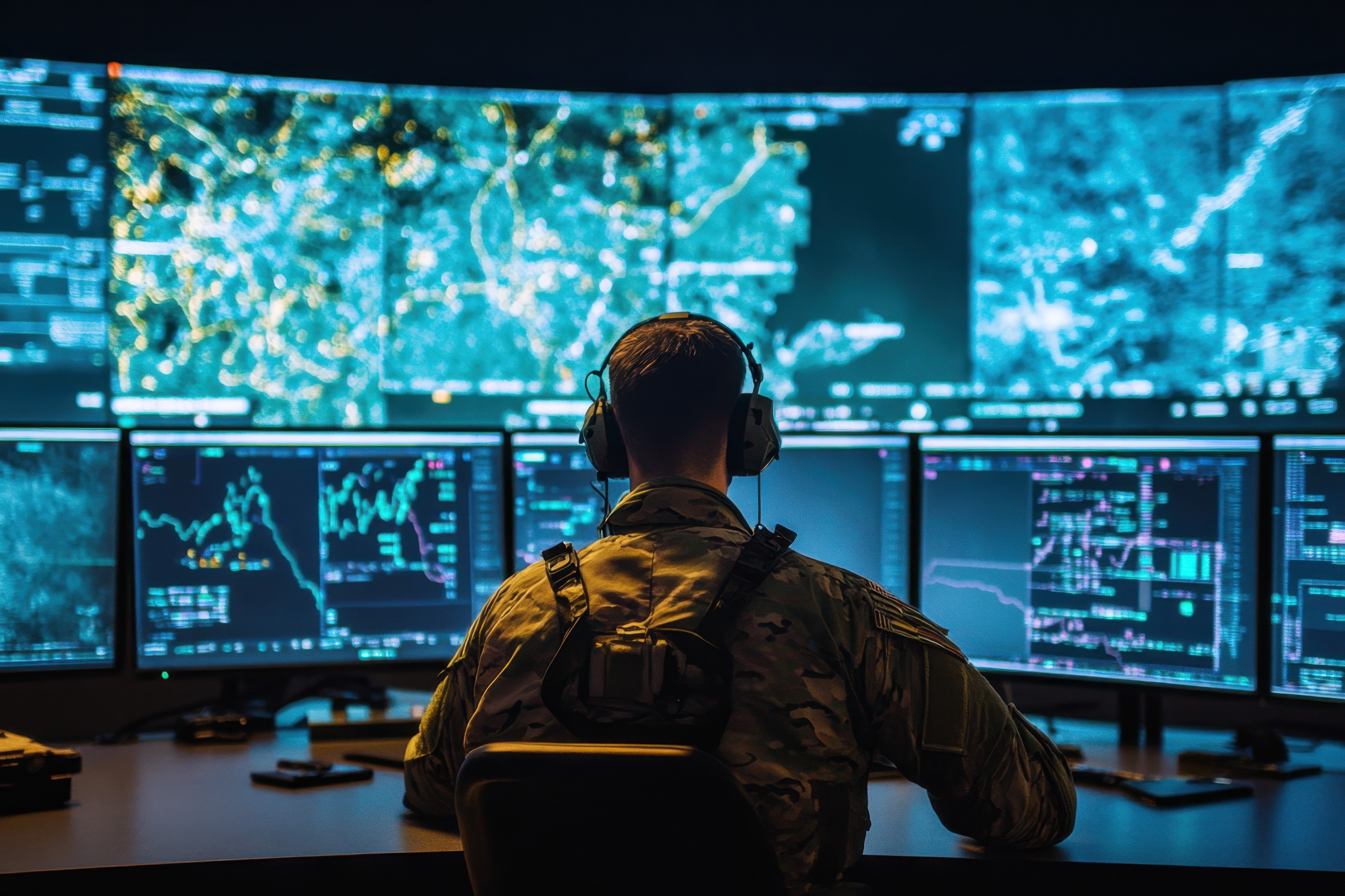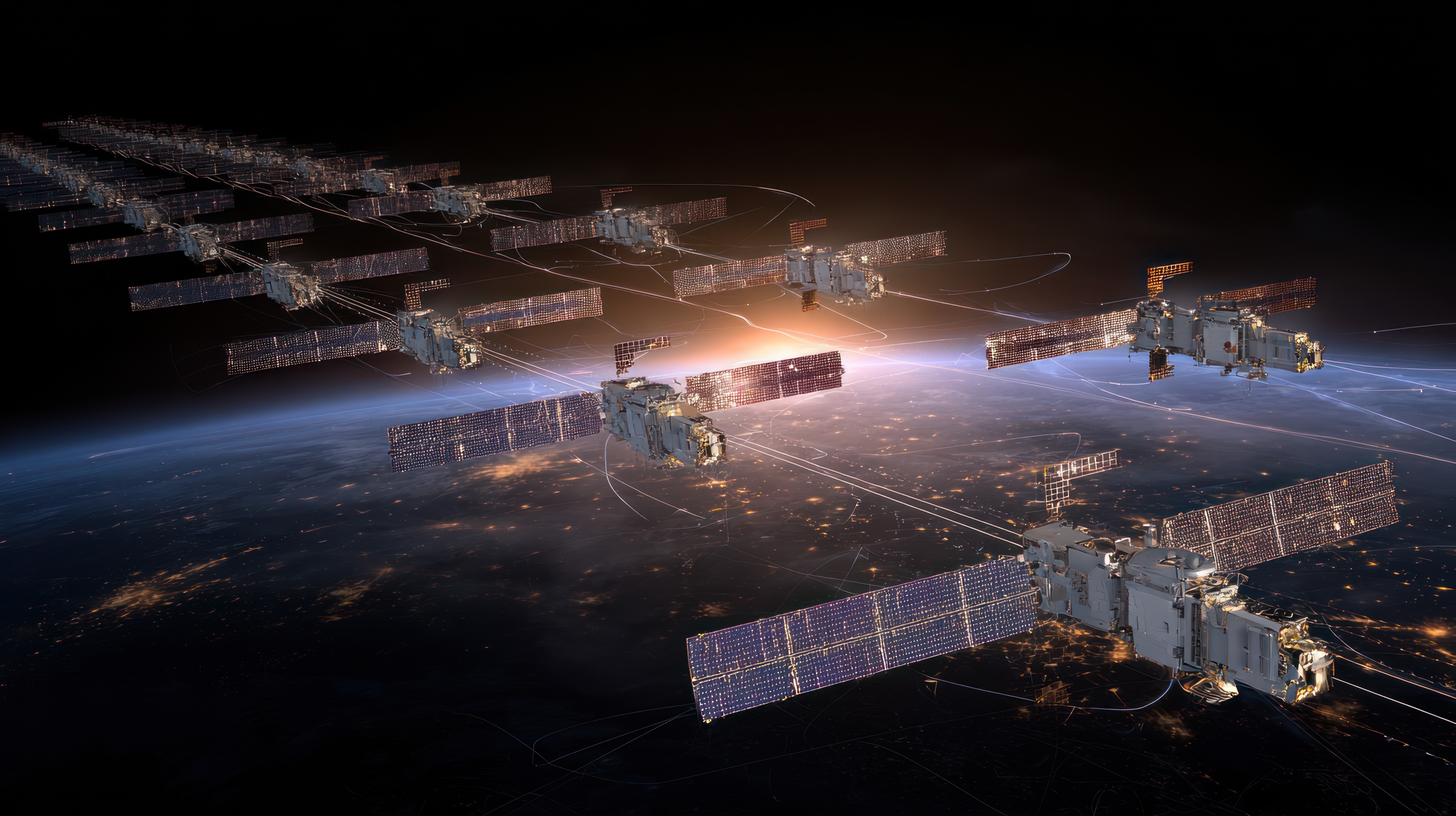Explore how deep RL transforms UAV autonomy and why hybrid physics-informed approaches are essential for real-world deployment.
Why Deep RL Matters for UAV Planning
Deep Reinforcement Learning (DRL) changes how UAVs make decisions. Instead of following pre-defined rules or static paths, DRL agents learn policies through experience understanding how to react to dynamic obstacles, shifting winds, or changing mission priorities. It’s the difference between preprogrammed control and true adaptive intelligence.
Classical planners like A* or RRT struggle once uncertainty enters the mission. They can’t anticipate unmodeled effects or partial observations. DRL, by contrast, learns directly from interactions, shaping policies that adapt in real-time drone swarm defense optimization scenarios and other unpredictable mission conditions. The result is UAVs that can generalize beyond training data and respond intelligently under pressure.
Still, DRL alone isn’t enough. Training demands massive computation, reward tuning is brittle, and policies often overfit simulation quirks instead of learning real-world physics. To reach operational reliability, DRL must integrate physics-informed models, constraint-based safety layers, and quantum-inspired acceleration. That’s the path from simulation benchmarks to dependable mission autonomy.
Problem Formulation for DRL-Based UAV Planning
Designing UAV planning as a reinforcement learning task hinges on three pillars:
State, Observation, and Action Spaces
The state represents ground truth UAV position, velocity, fuel, obstacles, targets, and adversaries. The observation is what sensors perceive noisy, partial, and delayed. The action defines UAV control: throttle, pitch, roll, yaw, or high-level moves (“go to waypoint,” “evade threat”).
Single-agent setups are straightforward; one UAV learns one policy. Multi-agent missions—like surveillance or defense demand coordination or competition, shaping algorithm choice.
Reward Design and Episode Structure
Rewards drive learning.
- Reach target: +100
- Collide: -1000
- Exceed fuel: -500
Small design tweaks can shift outcomes dramatically. Overweight safety, and the UAV never explores; underweight it, and it crashes. Sparse rewards slow training; dense rewards risk overfitting behavior.
BQP’s findings show DRL planners often need 10K–50K episodes to converge largely due to reward shaping and algorithm tuning.
Core DRL Algorithms and Architectures for UAVs
Multiple algorithmic families dominate UAV planning research:
On-Policy Actor-Critic: Proximal Policy Optimization (PPO)
PPO learns a policy (actor) and value function (critic) via stable gradient updates. Sample-efficient relative to pure policy gradient, less prone to divergence than early actor-critic variants. Widely adopted for UAV tasks: obstacle avoidance, navigation in cluttered environments.
Downside: on-policy means high sample complexity every policy update requires fresh interactions with the environment.
Off-Policy Continuous Control: SAC and TD3
Soft Actor-Critic (SAC) and Twin Delayed DDPG (TD3) reuse old data, improving sample efficiency. SAC adds entropy regularization to encourage exploration; TD3 mitigates overestimation via target networks and delayed updates. Both excel at continuous control (smooth throttle/heading commands).
Trade-off: more complex, harder to debug than PPO. Best suited when sample cost dominates compute cost (few real-world test flights available).
Value-Based and Hybrid Approaches
Deep Q-Networks (DQN) discretize action space; practical for waypoint selection or discrete command trees. Dueling architectures (separate value and advantage streams) improve learning.
Hybrids-e.g., combining DQN for high-level planning with low-level continuous control via SAC divide the problem, reducing complexity.
Multi-Agent DRL for Coordinated UAV Operations
Multi-agent tasks demand new considerations. Centralized Training with Decentralized Execution (CTDE) is the dominant pattern: train a joint policy in simulation with global state access, then deploy each agent's policy independently on real hardware using local observations only. Communication protocols emerge through learning: agents learn when and what to signal.
Coordination Mechanisms
- MADDPG (Multi-Agent DDPG): each agent has its own actor and a shared critic aware of all agents' actions.
- QMIX: factorizes joint Q-function into independent agent Q-functions, enabling decentralized execution.
- Emergent communication: agents learn to coordinate via latent message channels, discovering efficient signaling without explicit protocol design.
BQP's study reports multi-agent RL improves coverage efficiency by up to 30% vs. heuristics in search-and-rescue and surveillance tasks. Critical challenge: credit assignment: how to assign reward to each agent when outcomes are collective? Miscalibrated credit prevents learning; precise credit assignment requires environmental knowledge.
Quantum-inspired optimization excels here: exploring credit weight combinations faster than classical search.
Hybrid Approaches: Combining DRL with Model-Based Control
Pure DRL learns by trial; it doesn't know physics. Hybrid systems combine strengths: DRL handles adaptive decision-making and path planning in drone swarm operations, while classical optimization ensures constraints and feasibility.
DRL for High-Level Decisions, Classical Planner for Low-Level Execution
DRL learns "which target to visit next?" A* or RRT planner computes the collision-free path to that target. Result: DRL explores adaptively; classical methods guarantee feasibility.
Cost: adds latency (replanning per step can be slow).
Benefit: DRL learns faster because it doesn't waste samples on infeasible actions.
Model-Based RL and Learned Dynamics
Teach the agent a forward model: "if I command throttle X, my velocity becomes Y." The agent can then mentally simulate consequences before acting, reducing real-world sample complexity. Learned dynamics via PINNs Physics-Informed Neural Networks embed flight dynamics, aerodynamics, control constraints directly into the forward model.
Result: Agents learn faster, with fewer samples, and policies transfer better to real hardware—an essential foundation for adaptive drone defense systems that must operate reliably under uncertainty.
Safety, Constraints, and Reward Engineering
Safety-critical UAV missions can't tolerate DRL's trial-and-error. Collisions during training are unacceptable on real hardware. Multiple strategies mitigate this:
Constrained Policy Optimization and Safety Filters
- Constrained RL (CPO, PCPO): formulate constraints (no altitude below 10m, no speed exceeding 20 m/s) as Lagrangian constraints and optimize subject to them. Policy never violates hard constraints.
- Safety shields: learned policy proposes actions; a classical safety verifier checks feasibility and overrides if necessary. Slower but guaranteed-safe.
- Domain randomization in constraint space: vary constraint margins during training (sometimes enforce altitude limit at 12m, sometimes 8m) so policies generalize safely.
Risk-Aware Reward Design and Curriculum Learning
- Probabilistic rewards: instead of hard collision penalty, penalize probability of collision based on uncertainty estimates (sensor noise, wind).
- Curriculum learning: start with easy scenarios (few obstacles, benign wind), gradually increase difficulty. Agents learn fundamentals before tackling adversarial conditions.
- Reward shaping with domain knowledge: add bonuses for behaviors you want ("bonus for maintaining safe separation") that guide learning without over-constraining.
Simulation, Transfer Learning, and Sim-to-Real
Training directly on UAVs is costly and risky. High-fidelity simulators like AirSim and Gazebo approximate flight physics and sensors but simulation is never reality. Synthetic noise, idealized dynamics, and perfect control loops produce brittle policies that often fail on hardware. Boson closes that gap through domain randomization, ensemble dynamics, and online adaptation.
Domain Randomization and Ensemble Dynamics
By varying simulator parameters wind, drag, noise, latency policies learn to handle real-world variation. When deployed, changing conditions feel familiar. BQP’s studies show up to 85% sim-to-real success after fine-tuning. Ensemble dynamics further improve robustness, training multiple forward models to quantify uncertainty and guide safer exploration.
Online Adaptation During Flight
Even robust policies face drift in real missions. Online adaptation enables policies to recalibrate mid-flight, updating from live data. BQP’s research shows adaptation within 200 episodes using physics-informed PINNs delivering rapid correction under sensor noise, wind shifts, or degradation without full retraining.
Evaluation Metrics and Experimental Best Practices
Reproducible research requires careful measurement:
Task Success and Safety
- Task success rate: percentage of episodes reaching the goal.
- Safety violations: collisions, constraint breaches, out-of-bounds incidents. Must be zero in critical missions.
- Energy usage: total fuel or battery consumed; critical for long-range missions.
- Latency: decision cycle time; 10–20 milliseconds on embedded hardware for real-time control.
- Sample efficiency: episodes to convergence (lower is better; DRL averages 10,000–50,000 for complex tasks).
Reproducible Experiment Logging
- Fix random seeds for reproducibility. Randomness is default in DRL; controlled randomness enables debugging.
- Ablation studies: disable components (constraint optimization, physics model) to measure their contribution.
- Confidence intervals: run multiple seeds, report mean ± std deviation, not cherry-picked best results.
Implementation Challenges and Compute Considerations
Deploying DRL for UAVs faces practical hurdles:
Training Infrastructure
- GPU-accelerated training: PyTorch/TensorFlow on NVIDIA GPUs significantly speed policy network updates. Parallel environments (via gym vectorization or custom rollout workers) collect experience fast.
- Distributed training: multi-GPU or multi-node setups scale to large campaigns ($10,000–$50,000 compute budgets). Cloud platforms (AWS, Azure) offer elastic scaling for burst training.
- Checkpointing: save policy snapshots during training. Enable restart, early stopping, and ensemble formation.
Inference and Real-Time Deployment
- Model compression: quantization, pruning, distillation reduce neural network size for embedded hardware (NVIDIA Jetson, Intel NUC).
- Inference latency: typical policy execution (forward pass + decision) is 10–20ms on Jetson modules, supporting real-time 50 Hz control loops.
- Safety verification: before deploying, verify policy behavior across edge cases (e.g., extreme sensor noise, GPS failure). Formal verification is emerging but not mature.
How Boson Supports DRL UAV Planning
Your teams spend weeks tuning rewards and training policies only to find slow convergence or failed transfer. Compute budgets vanish chasing better hyperparameters. Boson removes this guesswork by integrating DRL with physics-informed optimization, constraint solving, and quantum-inspired acceleration.
Simulation-Driven Optimization Pipelines
Boson synchronizes high-fidelity simulators with DRL training loops powered by simulation-driven quantum algorithms. Policies train with live feedback from surrogate models and constraint checkers, not in isolation. Physics-Informed Neural Networks (PINNs) embed flight dynamics, aerodynamics, and control laws directly into the environment, cutting sample complexity and improving sim-to-real transfer.
Hybrid Templates for Safety and Speed
Preconfigured templates blend DRL with classical planners, MPC, or QIEO optimizers. DRL handles high-level decision-making (“which target?”) while classical modules ensure feasible trajectories. The result: faster convergence with formal safety guarantees.
Templates adapt to your mission type autonomous navigation, multi-agent coordination, or adversarial evasion—so you never rebuild from scratch.
Surrogate-Assisted Reward Evaluation
Training often stalls on expensive simulator calls. Boson’s surrogate models, trained offline on high-fidelity simulations, estimate rewards in microseconds. DRL explores policy space using these fast surrogates, validating only finalist policies against full-scale wargames. The outcome: 20× faster training, broader scenario coverage, and dramatically lower compute cost.
Scalable Parallel Training Orchestration
Boson distributes DRL training seamlessly across GPUs and compute nodes. Its orchestration layer handles rollout workers, experience buffers, policy updates, and experiment logging. Multi-agent setups benefit most each policy train in parallel with synchronized reward signals. What once took weeks now converges in days.
Real-Time Monitoring Dashboards
Live dashboards visualize policy evolution: episode returns, success rates, safety violations, and sample efficiency. Detect stagnation early, trigger retraining when performance drifts, and compare algorithms runs side by side. Track not just outcomes, but the entire learning trajectory essential for transparent, data-backed autonomy development.
Sim-to-Real Transfer and Online Adaptation
Boson integrates domain randomization, ensemble dynamics, and Quantum-Assisted PINNs (QA-PINNs) to speed sim-to-real adaptation. Few-shot protocols let policies adjust to sensor noise or environmental changes in under 200 episodes.
Pilot programs and integration support guide your transition from simulation to flight reducing time-to-field and de-risking mission autonomy.
Ready to Accelerate DRL for UAVs?
Train faster, safer, and smarter with Boson’s hybrid DRL framework. Physics-informed, optimization-guided, and quantum-accelerated—built for mission-ready autonomy.
Schedule a Demo →Start your 30 day free trail
Conclusion: Moving DRL from Research to Operations
Deep Reinforcement Learning is transformative for UAV autonomy. It enables adaptive decision-making in complex, uncertain environments where classical planners fail. But DRL alone is not enough. Pure learning without physics or constraints wastes computation and creates brittle policies.
The future is hybrid: DRL learns what’s hard to model; physics-informed constraints enforce feasibility and safety; quantum-inspired optimization speeds convergence; real-time monitoring ensures dependable deployment.Stop tuning rewards endlessly. Stop burning $50,000 on the computer. Stop hoping sim-to-real transfer just works.
Start integrating physics-informed PINNs, constraint-based optimization, and quantum-accelerated training.
Boson’s hybrid framework fuses DRL with domain knowledge and optimization power delivering faster convergence, safer execution, and mission-ready autonomy.
Evaluate hybrid DRL on representative missions like trajectory planning for satellite imaging. Run a pilot with Boson to see measurable acceleration, safety guarantees, and validated sim-to-real transfer. Build reproducible pipelines so your team scales knowledge, not trial-and-error.
Ready to move DRL from lab to launch?
Run a pilot with Boson’s hybrid DRL framework. Validate convergence acceleration, safety guarantees, and real-world transfer on your mission scenarios.
Book a Demo
Frequently Asked Questions
Is deep RL ready for safety-critical UAV missions?
Not pure DRL alone. But hybrid setups with constrained RL, safety shields, and verified controllers are field-ready when paired with simulation validation.
How do I reduce sample complexity for DRL on UAVs?
Use hybrid methods: physics-informed models, off-policy algorithms, model-based RL, curriculum learning, and surrogate-assisted evaluation. Together, they cut training time by over 50%.
Which DRL algorithm should I start with for continuous control?
Begin with PPO for stability and simplicity. Move to SAC when sample efficiency matters, and use Boson’s templates to scale safely as complexity grows.





.png)
.png)




.svg)
.svg)
.svg)
.svg)